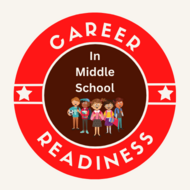Episode 22 Lessons In Adolescence Podcast Quick Listens
(View Complete Item Description)These two Quick Listens are from Episode 22 in Season 2 of the Lessons in Adolescence podcast. Listen to more where ever you get your podcast or online at: https://education.virginia.edu/faculty-research/centers-labs-projects/youth-nex/remaking-middle-school/youth-nex-rms-podcast-page This episode features a conversation with three authors of “Career Exploration in the Middle Grades: A Playbook for Educators,” which was developed in partnership between the Association for Middle Level Education (AMLE) and American Student Assistance (ASA). Stephanie Simpson is CEO of Columbus, Ohio-based AMLE, which represents tens of thousands of middle level educators across the country and offers a variety of resources, training and convenings for the field. Ashley Hemmy is manager of program engagement at Boston-based ASA, a 60 year-old national nonprofit and student loan guarantor organization which has expanded its mission to develop and invest in resources and tools to help students as early as middle school to explore their long-term career and educational goals. Julie DiPilato is a seventh grade science teacher in Barnstable, Massachusetts, where she developed an array of career exploration programming in her school. Stephanie, Ashley, Julie and Jason talk about the career exploration playbook, how it came about, why career exploration is a perfect match for young adolescents and where it fits within schools. They then paint a picture of what career exploration looks like in the middle grades, how educators can use it to enhance their teaching, the ways AMLE and ASA are promoting the larger scale adoption of this practice, and the opportunities for career exploration in the field of education long-term.
Material Type: Other












